The Club was founded in the bleak days of the Second World War when it was illegal to use petrol in a pleasure boat. It is therefore not surprising that the Club was formed in somewhat unusual circumstances. Pleasure boats had moored in this canal arm since shortly after the turn of the century and many of them had been kept in boathouses. A brief history of the canal arm may be found here
In 1937 the boat house owners in the Arm, for the first time, grouped together to employ a solicitor to fight a demand from the local council for rates on their boathouses. Although they did not succeed and had to pay rates, the idea of forming themselves into an association was first kindled. In May 1943 Mr HW Downs, who had owned a pleasure boat since 1925, was approached by a group of boat owners who suggested that a club be formed to rent the wharf and yard which was at this time unoccupied. The railway owners (L.N.E.R.) were approached and asked a rental of 1/- (5p) a yard which was beyond the means of the moorers. Subsequently Mr Downs was visited by the L.N.E.R. district engineer who said that they would like to see a club formed that could take over all of the yard and wharf.
A meeting of all interested parties was called and it was decided to form a club to rent the area on 11th June 1943 – there were sixteen founder members. A name for the Club now had to be chosen and many years later Mr Downs recounted how this came about. “Having had much to do with the North Cheshire Water Board the name “North Cheshire Cruising Club” came naturally.A prize of 5/- (25P) was offered for the best design for a Club burgee and was subsequently won by Mr Bill Axon for the only design submitted.” Mr Axon moved from the area shortly after the war and lost contact with the Club. In 1983, when we were preparing the celebrations for our fortieth anniversary, he was traced and it was found that after nearly forty years he still had the original hand made burgee pinned up on his garage wall. He donated it to the Club and it can be seen today in the Clubhouse, framed and preserved for all posterity in a vacuum. Regrettably Mr Axon, the last of our founder members, died in 1992.
There was a small office that then stood by a weighbridge at the entrance from the main A6 road. It was in a deplorable state as it had not been used for years and was badly affected by dry rot. The members set about repairing it and converted it into the first Clubhouse. The crane on the wharf was unusable at this time and in true war time spirit, it was repaired with parts salvaged when a Manchester tram route was being dismantled. Although this crane has not survived nor the succeeding crane that was scrapped as unsafe about 1996.
Club cruises in war time were also rather unusual. Because of the prohibition of the use of petrol in their boats members would arrive at the Arm by public transport and bow haul their boats to the main canal. Here they would eat the sandwiches they had brought with them before they bow hauled their boats back to their moorings. Quite how the Commodore led these cruises is not recorded! Accounts exist of several powered cruises at this time, all of which ended in brushes with the police.After the war small amounts of petrol became available for pleasure cruising but members found that the condition of the canal was fast deteriorating as little maintenance was being done as commercial traffic had virtually ceased. In 1953 the club was deeply involved in the Macclesfield National Rally that drew attention to the threat then hanging over the canal.
On 6th March 1955 the secretary reported that a number of officers of the Club had attended a meeting of the County Anglers Association which was addressed by a representative of the IWA where the results of the Board of Survey of the canals were reported. The conclusion of the Board of Survey was that the Ashton, Peak Forest and Macclesfield Canals were recommended for closure. The meeting resolved to take all necessary action to combat this. Local MPs and councillors were contacted, a public petition was organised and meeting of all interested parties held.
It is difficult to know at this point in time simply from the minutes of committee meetings, whether the Committee of the NCCC or its members appreciated how close the Macclesfield Canal came to closure in 1955. The whole waterways movement fully expected the BTC annual Bill to include powers to abandon the majority of the class 3 waterways which included the Macclesfield, Ashton and Peak Forest Canals. But when the Bill was published on 28th November 1955 there were no such draconian powers sought. This reprieve was a consequence of the widespread public disquiet and parliamentary concern about what was being proposed. The NCCC organised a petition and the all party meeting at Stockport Town Hall was part of this pressure. The Bowes committee was established to take a broader view of the future use of the canals within the BTC umbrella. It did not report until July 1958, which gave a breathing space.
Meanwhile some curious events had occurred. On 8th Jan 1956 Mr E Burgess reported that he had received a letter from the commercial manager BTC Liverpool expressing good wishes for the success of pleasure cruising on the Macclesfield Canal! In October 1956 it was reported that we had been approached by Cheshire County Council and the Mersey River Board for information to be supplied to the Bowes committee. Then on Thursday 27th February 1958 at a half hours notice we were visited by Sir Reginald Kerr the head of British Transport Waterways, Mr Marsh NW Head of BTW and Mr Scarlett the local inspector. The visit occurred mid week and they were greeted by Messers Brierley and Kennerley (the Club chairman being unavailable at such short notice). The object of the visit was a preliminary survey prior to a visit by water of Sir Reginald Kerr. This visit occurred on 21st May 1958 at one day’s notice, when he was accompanied by Lady Kerr in the inspection launch Kingfisher. Sir Reginald was accompanied from Poynton by an escort of eleven club boats. Upon arrival at High Lane he inspected the accompanying craft and the Clubhouse and then addressed a gathering of about 40 people, stating that he was very anxious to develop the use of canals by private boat owners.
The BTW booklet No. 11 on cruising the Macclesfield and Upper Peak Forest Canals was issued in 1958 and no mention was made of the Ashton or Lower Peak Forest Canal.
From these disconnected strands can be divined official policy on the three canals: support for the Macclesfield and abandonment of the Ashton and Lower Peak Forest from Marple top lock. In 1961 and 1962 Sir Reginald and his wife were invited to be the honoured guests at the NCCC dinner dance to thank him for his support and he was elected an honorary member in 1961.
The struggle for the Macclesfield canal succeeded with only modest effort but that for the Lower Peak Forest and Ashton canals intensified. Requiring a National Rally at Marple in 1966 with follow up events in the four succeeding years all heavily supported by the Club. Fortunately opinions were changing there was a new Labour government, the southern Stratford canal had been restored and there was a greater demand for leisure. All this combined to encourage the passing of the 1968 transport act which assured the future of the canal network. The Ashton canal still had to be saved but the method by which this could be achieved had been demonstrated and was applied by the Peak Forest Canal Society. The canal was reopened in 1974 and its status increased to cruise-way by the 1983 transport act.In the mid 1950’s a wooden estate agent’s building in the yard became vacant and, as the Club had outgrown its original Clubhouse, was acquired and converted. The Club continued to grow and after about twenty years this building was proving to be too small. A lease was subsequently negotiated with B.W. on the present Clubhouse which was in a semi derelict condition and after considerable restoration was opened in 1975 by General Sir Hugh Stockwell. The original slipway was constructed in the mid 60s. This was replaced in 1995-6 by the present slipway constructed by the considerable efforts of members.
Together with accounts of club and individual cruises the most notable of which were to Market Harborough in 1951, The reopening of the Stratford canal, which was attended by a magnificent array of 15 club boats and the Commodores Cruise of 1993, taking in the Manchester Ship Canal, Weaver and Dee.
Accounts of all these events can be found in Golden or Diamond Reminiscences.
A fuller account of the Club History can be found in “In The Arm” the story of North Cheshire Cruising Club, 2009, Published by NCCC.
Dennis Suleman revised by Noel Christopher, 2010.

Individuals have owned boat houses in the High Lane Arm of the Macclesfield Canal since at least 1910. These individuals came together in 1943 to form the North Cheshire Cruising Club (NCCC). A chance discovery whilst clearing a store room revealed an almost complete set of Club minutes which has allowed the author to piece together the story of the Club from earliest times to the present day.
The club was formed in the middle of the Second World War and it was therefore an act of great optimism. This optimism continued in the early years of peace but was soon dashed by the threat of widespread canal closure. The campaign to save the Macclesfield, Peak Forest and Ashton Canals was central to the National campaign being mounted by the fledgling Inland Waterways Association to preserve the right of navigation on threatened waterways and reinvent the canals as a leisure facility. This book documents the role played by NCCC in this fight, describing the early Cruising Queen celebrations, Macclesfield and Marple rallies and canal clearing activities on the Ashton Canal, as well as other contributions setting the NCCC’s part in context.
Concurrently with these nationally important activities the NCCC worked towards full occupation of the arm and provision of boating facilities. The most ambitious projects were the conversion of the stone warehouse and the second slipway. It also catalogues the regular activities of a thriving cruising club on the Macclesfield Canal and how they have changed with time.
The book of 80 pages utilises over 40 photographs from the club archives and other sources, many not previously published. The author is an honorary life member of the NCCC and their archivist. He is therefore uniquely qualified to write this history.
Accounts of all these events can be found in Golden or Diamond Reminiscences.
A fuller account of the Club History can be found in “In The Arm” the story of North Cheshire Cruising Club, 2009, Published by NCCC.
Dennis Suleman revised by Noel Christopher, 2010.
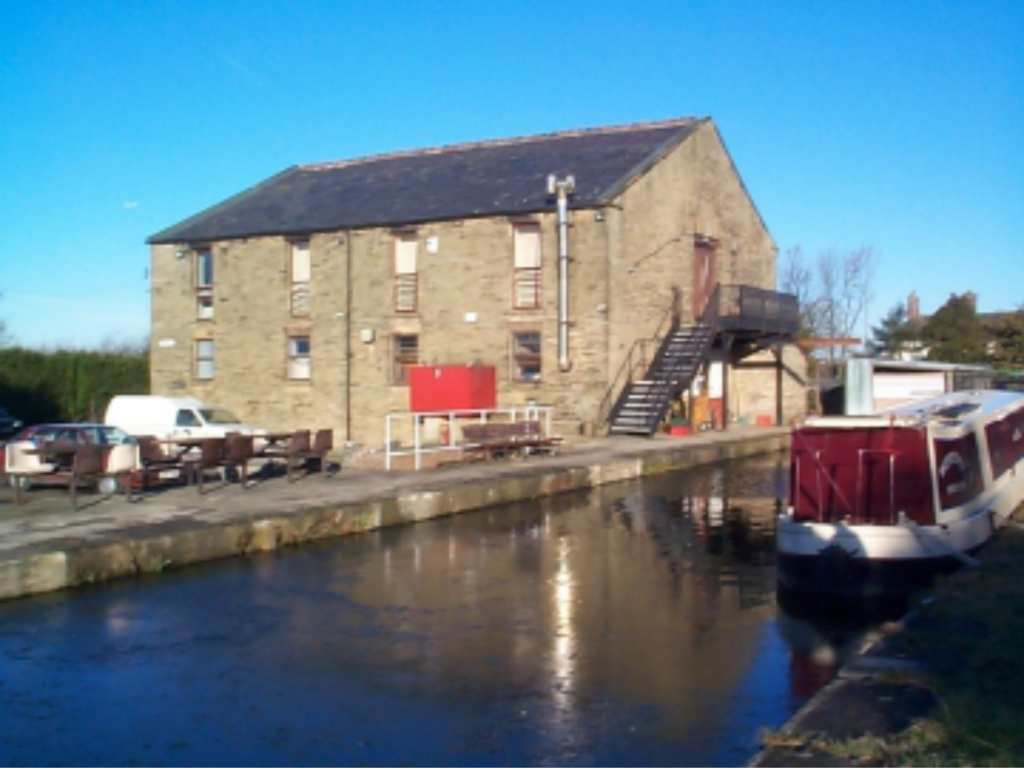
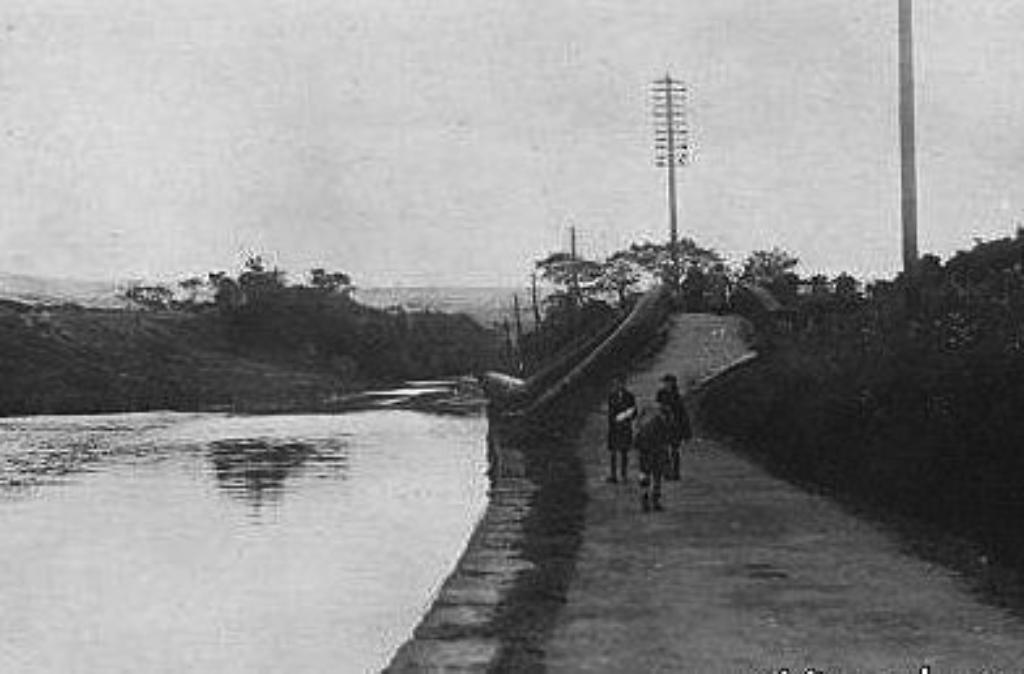
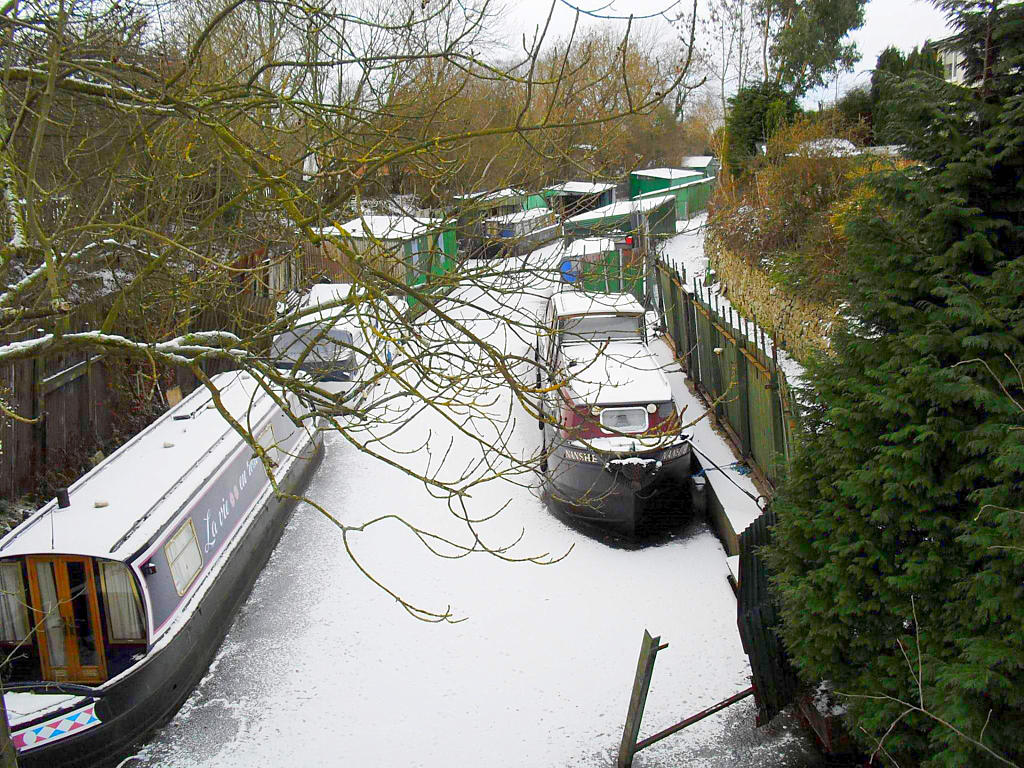
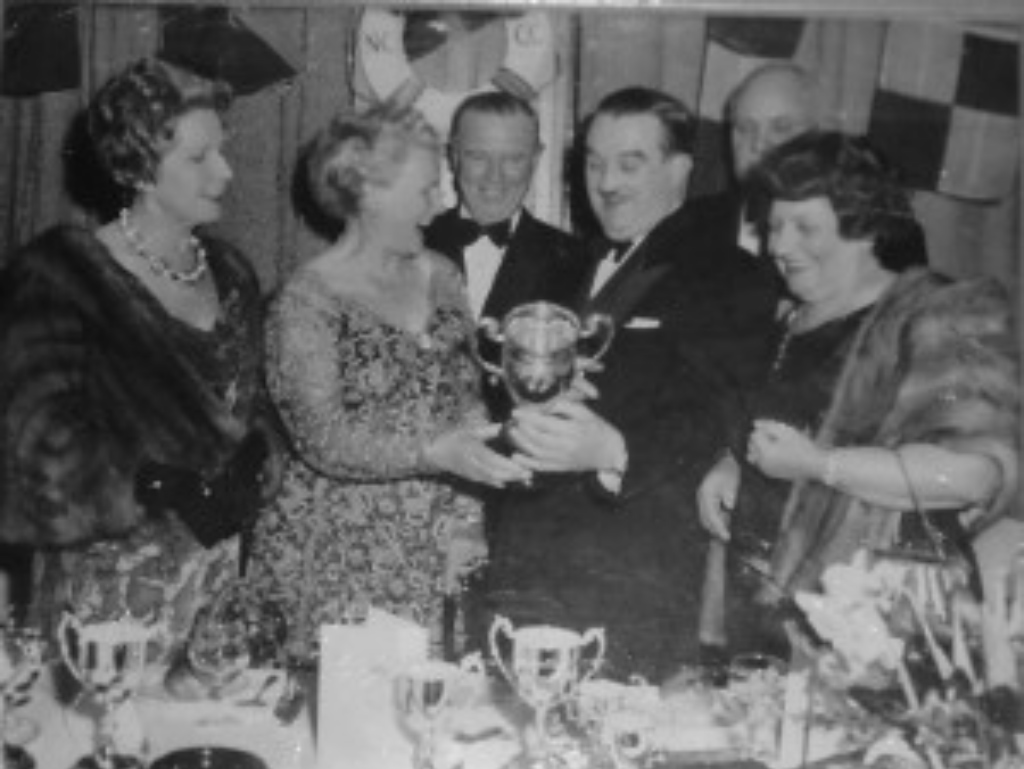
Lady Kerr enjoys a joke with the club Chairman Len Cohoon, Sir Reginald Kerr is being Mrs Cohoon
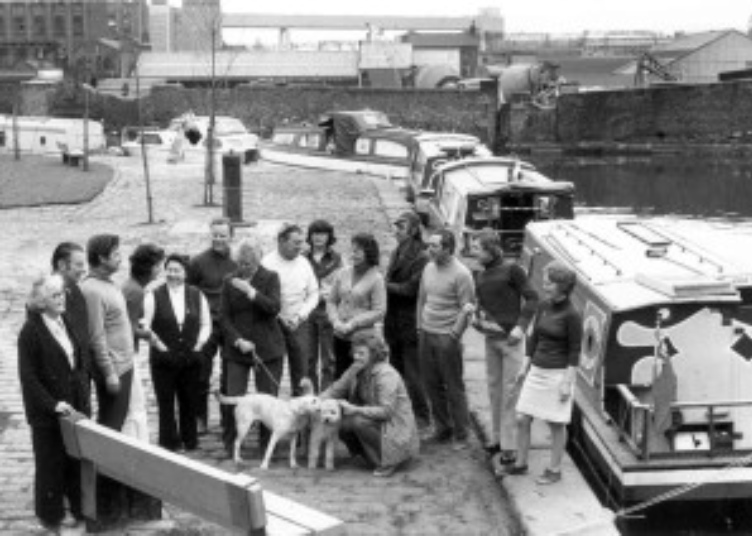
Club boats in Dale Street basin 1976 having just navigated the reopened Ashton Canal
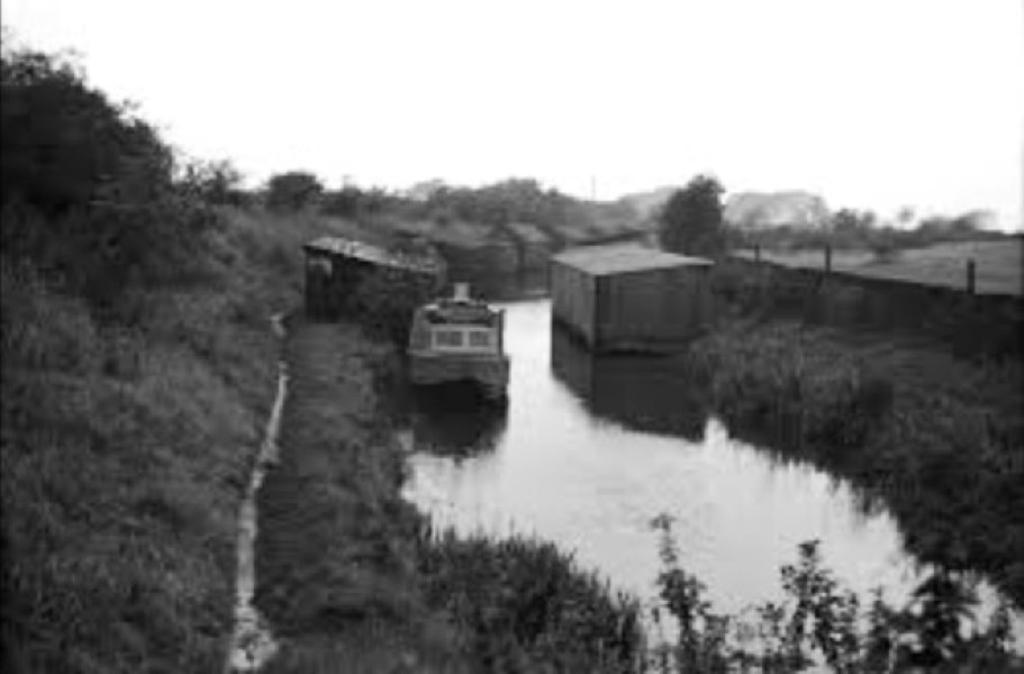
The early view of High Lane arms clearly shows the boathouses on the south side of the arm and their limited extent.
The boat in the middle distance is ‘Stella’ renaming ‘Puffing Billy’ because of its funnel which was used to ventilate the exhaust from the inboard petrol engine
“The Stan Heaton photos from the narrowboat magazine archive”
